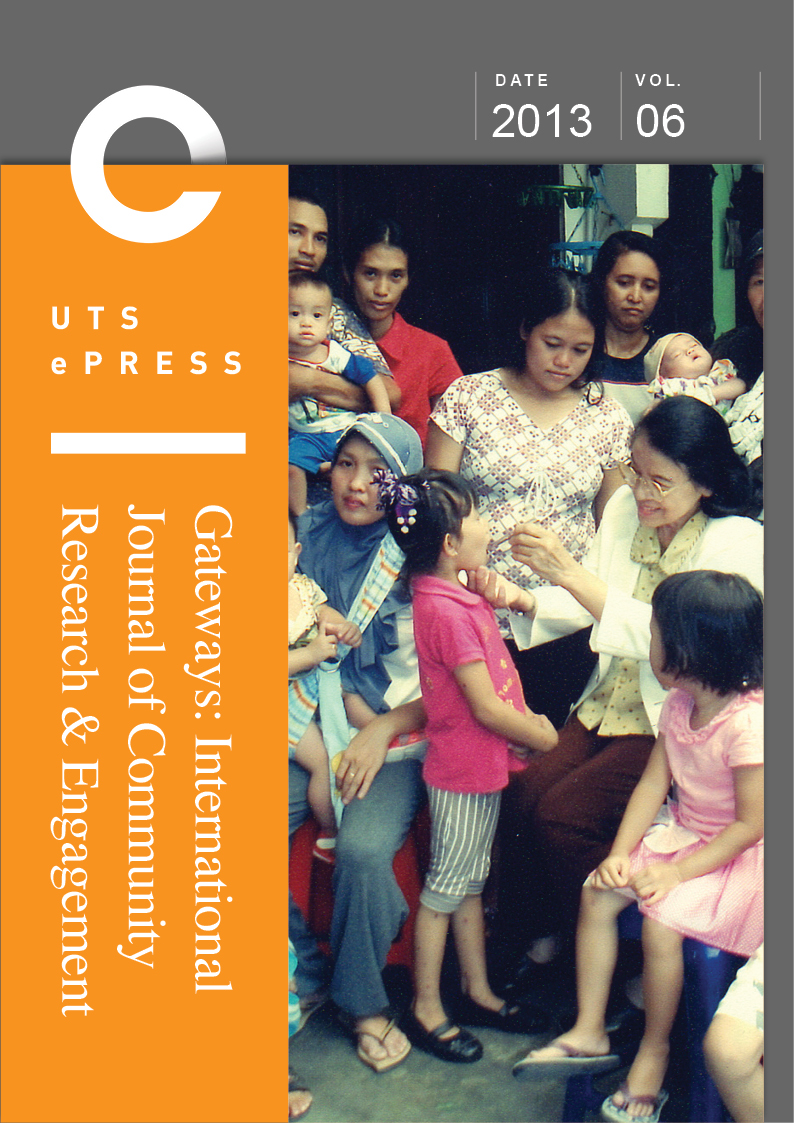Gateways: International Journal of Community Research and Engagement
Vol. 6 (2013)
This volume of Gateways: International Journal of Community Research and Engagement features articles notable for the complexity of the collaborative work described, as well as a fine-grained attentiveness to questions of perspective, participation and governance. The authors of Experiences of participation in community-based research decision-making explore how community members may weigh up their involvement in terms of risk, and their reflections resonate with ideas raised in Levels and networks in community partnerships, in which aspirations toward an ‘ideal’ level A engagement are tempered by an appreciation for the way in which different partnerships exist in a networked, interdependent relationship. Perhaps not surprisingly, our two practice-based articles describe multi-party, large-scale, long-term projects – not only full of potential but demonstrating impact. The first reflects on lessons learned from over 20 years of collaborative work between the Medical University of South Carolina and the Gullahs, or Sea Islanders of South Carolina and Georgia, USA; the second details an ambitious project by the National Rural Health Mission in India to integrate community-based monitoring into various levels of the public health system. Methodologically, a number of different approaches and stages are explored: service-learning for teachers of English Language Learners; the application of managerial quantitative research techniques in severely resource-constrained Bolivia; the how and what of participatory action learning and action research (PALAR); and the potential for a needs and readiness assessment to lay the foundations for successful university-community collaboration. We are also pleased to include a taste of activities occurring in Asia with three articles examining the development and implementation of university-community engagement in two Hong Kong universities: HK Baptist University and Lingnan University. In their research for this special section, our guest editors noted how ‘universities in different parts of Asia have taken very different paths in engaging with their respective communities, with quite a number of universities focussed on projects that seek to directly improve the livelihood of their community. In other regions, such as Hong Kong, universities have come to emphasise knowledge and technology transfer, along with service learning and service leadership, as the means by which they apply their knowledge to address identified problems’. At the same time as these on-the-ground efforts are helping to institutionalise community engagement, 2012 saw the formal creation of a regional alliance known as AsiaEngage, which brings together the strengths of the Asia-Talloires Network of Industry and Community Engaged Universities (ATNEU), the ASEAN University Network Thematic Network on University Social Responsibility and Sustainability (AUN-USR&S) and the ASEAN Youth Volunteer Programme (AYVP). We look forward to seeing the further development and reporting of university-community engagement in Asia.
Published: 2013-10-31
